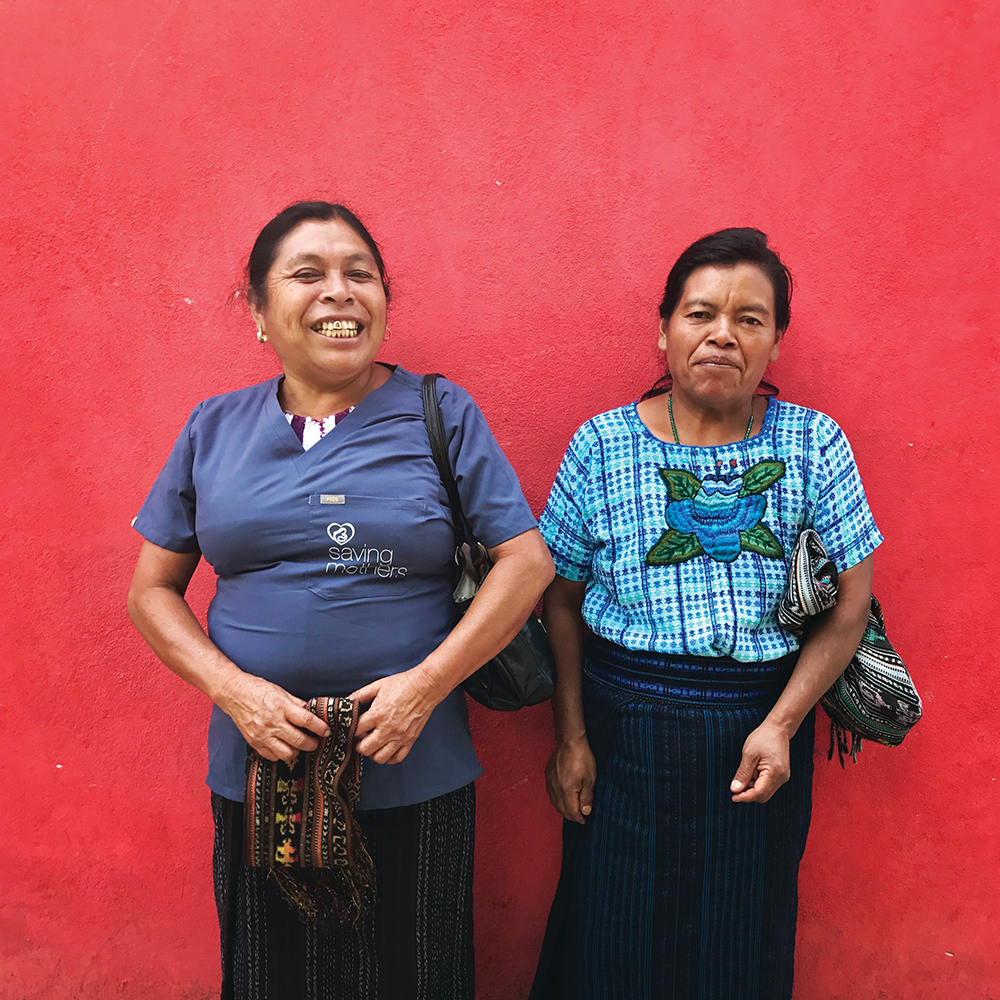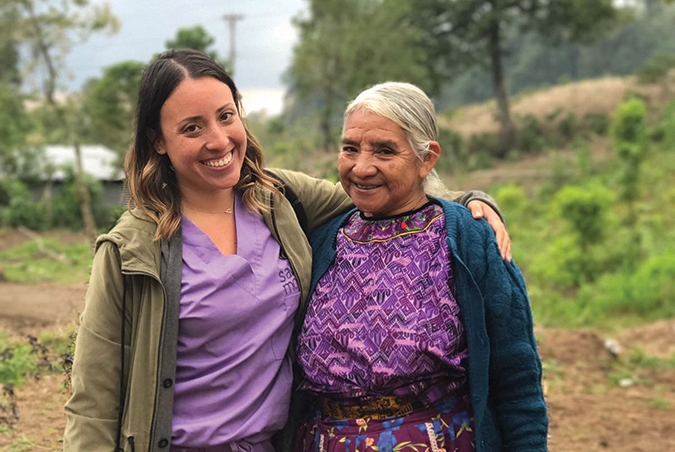In the midst of my second year of medical school, I was lost. The never-ending days of lectures, studying and memorizing felt devoid of the deep connection between doctor and patient that had called me to medicine and that I was anxious to cultivate as a student. But more terrifying than my disillusionment was the feeling of absolute isolation as everyone but me appeared passionate about medical school. It wasn’t the first time I’d felt this way. A couple of decades earlier, as a newly immigrated 10 year old from Colombia, I experienced fear and isolation on a grander scale, as I couldn’t grasp why my single mother would move us across an ocean. Those feelings soon morphed into excitement about my new country and gratefulness for my mother, as I understood that she had sacrificed her home to raise us in a country where obtaining higher education—especially for her daughters—would be easier to achieve.

Two more of Sasha Hernández's comadrona colleagues.
From these early life experiences, I began to see education as a way to acquire agency and independence as a Colombian-American woman. Yet here I was, 15 years later, questioning the driving force that had taken me from an honors high school, to an Ivy League college, to education work abroad and now to what seemed like the culmination of it all, pursuing a doctorate in medicine to help underserved communities in New York. Realizing that I drastically needed to change my surroundings, I serendipitously found myself as the new programs coordinator for a small NGO called Saving Mothers that uses health education to help reduce maternal mortality in rural Guatemala. My new title meant that after my third year of medical school, I would be taking a year off from my studies and living in Central America, supporting a training program for Mayan traditional birth attendants known as comadronas. After that third year—marked by pre-rounding, morning conferences, scurrying after my team on rounds and experiencing death, suffering and the magic of birth—I was off to Guatemala. Three flights, two rickety buses and one moto-taxi ride later I finally reached the tiny mountain town, San Martin Sacatepéquez, that I would call home for the next year. My main responsibility during my initial weeks was to grasp how to deliver a clinical curriculum to mostly illiterate comadronas. As an intent observer—a skill every third-year medical student painstakingly learns—I quickly appreciated the challenges of teaching fetal heart rate ranges. Understanding that the appropriate range was between 120 and 160 was a simple lesson for the comadronas. But it would take hours for them to recognize the written numbers on the fetal Doppler, a hand-held ultrasound used to detect the baby’s heartbeat. As I quietly observed each lesson, I was finally grasping the weight of this training program and, more importantly, the resolve of the women.
Six weeks later, I was ready to lead a class. Buzzing with nervous energy, I began to relax as the class of comadronas filed into the classroom and during our customary greeting of a kiss on the cheek would gently sigh in my ear different iterations of “I don’t know if I can do this.” I wasn’t the only one with jittery nerves. The tense energy in the room was heightened as I began to hand out the midterm exam. I sensed this part of the class would be difficult since test-taking was a foreign concept for our comadronas; most of them hadn’t finished primary school and were now in their mid-60s. Each timidly accepted her exam, sharpened pencil in hand, and began to intently and slowly murmur every test question under her breath. Thirty minutes into the midterm, I noticed some of them nervously shifting in their seats and stealing side-glances at each other. Realizing something wasn’t right, I paced around the room and began to see every single answer choice circled on each page of their exams. I suddenly realized that they didn’t know how to take a multiple-choice test.
I tried my best to hide the astonishment I could feel flooding over my face. Sure, I had known that these women never studied past the first grade. I had witnessed how printing a name was a five-minute task. I had neurotically reviewed with them how to recognize numbers on a Doppler screen. Although the dedication to these tasks gave me deep respect for them, it took a multiple-choice exam—an innate concept in my own career of learning—to show me how truly extraordinary these women were and, more importantly, how alike we were. I recognized that they were seeking the same autonomy I had already found through education. We intimately shared a desire to attain knowledge in order to better help the women we take care of.
After regaining my composure, I spent the next three and a half hours methodically explaining the 10 test questions and confirmed that everyone understood how to choose just one answer. When the last comadrona turned in her exam, the room erupted in celebration. As each woman left for home, I was embraced and thanked profusely for my patience during their test. I struggled to express my pride, admiration and respect in return. How could I convey that I was floored by the commitment they had made to be better healthcare practitioners despite their lack of formal schooling? I understood that taking a multiple-choice exam was not just a simple test of knowledge, but a real way for these women to stretch the strict boundaries that their traditional Mayan culture had placed on them.
By going to Guatemala, I thought I would be fundamentally changing my life’s course, perhaps even by leaving medicine. Instead, I rediscovered my love for health education—and medicine itself—by witnessing its simple but transformative nature on the comadronas and the lasting impact it would have on their patients. As I continued to hug each of them, I knew words would do no justice. I could only hope that through our physical touch they understood that they had helped me find the physician I would become, who believed in the power of connection and love in medicine.
— Dr. Sasha Hernández ’18
Dr. Sasha Hernández ’18 is a resident in obstetrics and gynecology at NYU Langone Medical Center and a member of the Saving Mothers advisory board. A version of this piece first appeared in Ascensus: Weill Cornell Medicine Journal of the Humanities, as well as Weill Cornell Medicine, Summer 2018 issue.

